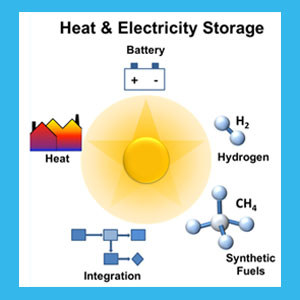Speaker
Mr
David Perraudin
(EPFL)
Description
The development of technologies for energy storage has been intensified in recent years driven by the disparity between energy availability and demand, which is expected to increase further as an
increasing amount of energy is provided from renewable and intermittent sources. A large fraction of the end energy is used in heating applications, in Switzerland amounting to about 50% of which an estimated 14% is used in high temperature applications (temperatures >400°C). In order to cover this need for continuous availability of thermal energy with renewable sources or waste heat, advanced heat storage technologies are required. Latent heat storage by means of phase change materials (PCM) has proven to be an attractive heat storage technology. Key advantages include the high energy storage density, applicability to high temperatures, and the ability to store and release heat at a constant temperature.
We developed a 1D numerical model of a basic latent heat storage material system composed of a metallic PCM and a metal-ceramic PCM encapsulation. Using a metallic PCM with high material bulk conductivity compared to materials commonly used as PCMs, such as salts, automatically alleviates challenges connected to inefficient charging and discharging. The multi-component encapsulation allows for robustness via the chemically inert and thermally stable ceramic layer while ensuring mechanical stability and enhanced heat transfer by the metallic layer. During charging a heat transfer fluid (HTF) at high temperatures (above the melting temperature of the PCM) transfers its thermal energy to the PCM by convective, conductive, and radiative heat transfer. During discharging, the HTF is below the melting temperature of the PCM and heat is transferred back, thus the heated HTF can be used in subsequent thermal applications such as power generation or process heat. The model is used to select suitable PCM material systems and operating conditions based on a variety of up and downstream applications.
Subsequently, full three dimensional models including all relevant physical phenomena such as convection, conduction, radiation and phase change will be developed, to investigate the charging and discharging, and to optimize the performance. Detailed simulations will support the design and implementation of well performing high temperature heat storage systems.
Such systems will contribute to an energy economy with an increased fraction of renewable energy sources and will be able to smoothen fluctuations in the incoming energy sources, thus solving two issues of paramount importance in the context of renewable energy.
Author
Mr
David Perraudin
(EPFL)
Co-author
Prof.
Sophia Haussener
(EPFL)

